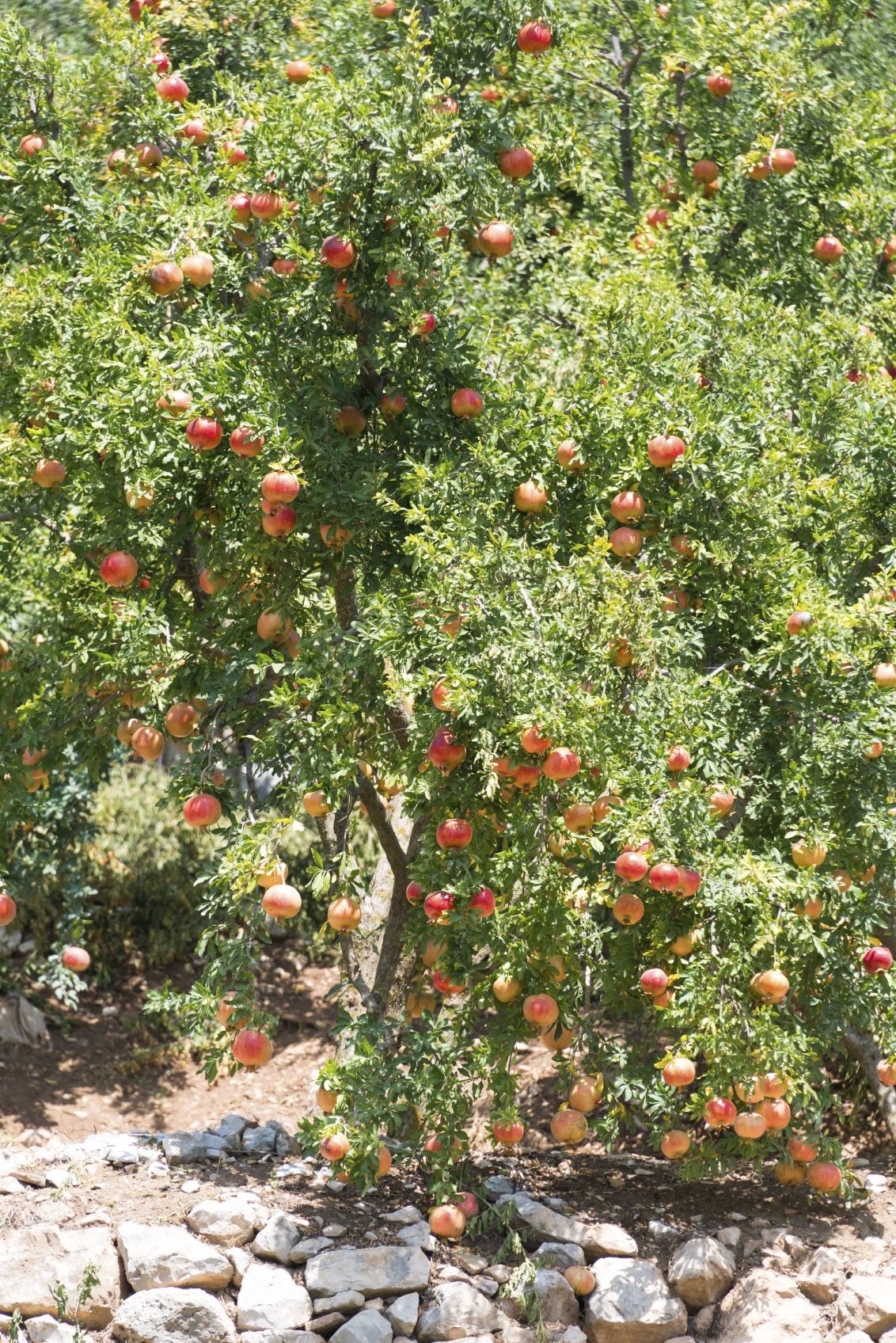Pomegranate Tree Pruning – Learn About The Cutting Of Pomegranates


Pomegranate trees are actually multi-trunk shrubs that are often cultivated as small, single-trunk trees. Read on to learn more about pruning/trimming pomegranate trees.
Trimming Pomegranate Trees
Pomegranate trees can grow to 18 to 20 feet (5-6 m.) high. They are deciduous in interior, winter-cold areas but can be evergreen to semi-evergreen in milder regions near the coasts.
Pomegranates are beautiful plants with an arching, vase-like form; narrow, bright green leaves; orange-red springtime flowers, and large red-husked fruits that bear hundreds of fleshy, sweet-tart, edible seeds.
It is important to prune pomegranate trees properly if you want to increase fruit production and maintain an attractive form. Unfortunately, these two goals are in conflict.
When and How to Prune a Pomegranate Tree
Commercial growers typically shorten branches to induce new fruit producing shoots and fruiting spurs. This method creates short, stubby branches that are not natural to the arching form of pomegranate trees.
If your goal is primarily ornamental, pomegranate tree pruning should entail thinning out weak, awkward, diseased, and crossed-over branches and suckers by cutting them to their base. Do this on an annual basis. This type of cutting of pomegranates encourages their natural form, opens up the center so air and light can penetrate the interior, and reduces disease vectors.
Additional pruning at the ends of the branches should be done lightly – just enough to maintain a balanced form. If your goal is fruit production you need to prune pomegranate trees to increase exterior branches that form fruiting wood and fruit spurs.
Sign up for the Gardening Know How newsletter today and receive a free copy of our e-book "How to Grow Delicious Tomatoes".
Shorten the exterior branches and allow the even smaller side shoots to form in the spring. This new growth is more likely to form flowering and fruiting buds. If you want both the beauty and the bounty, consider integrating the native pomegranate (Punica granatum) into your ornamental landscape while at the same time growing one of the delicious cultivars (e.g. “Wonderful”) in a backyard fruit orchard.
If a tree is mature but produces little fruit, you can prune it more assertively. The best time for structural pomegranate tree pruning is late winter before the buds break but after risk of frost has passed.
You can prune out suckers and other awkward branches as they appear throughout the growing season. If the tree is developed and maintained properly, it should only require light annual pruning. Pomegranates are beautiful ornamental tree/shrubs that produce fabulous fruit. Place them in a location where you can enjoy them regularly.

Karen Boness is the founder of Wild Willow Design, an Australia-based company that specializes in ecological landscape design.